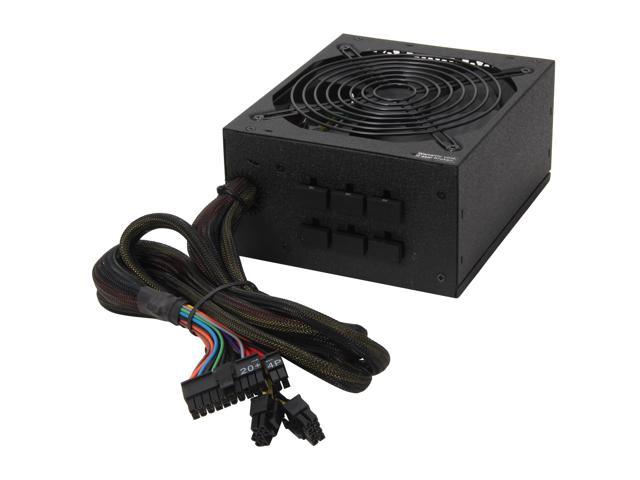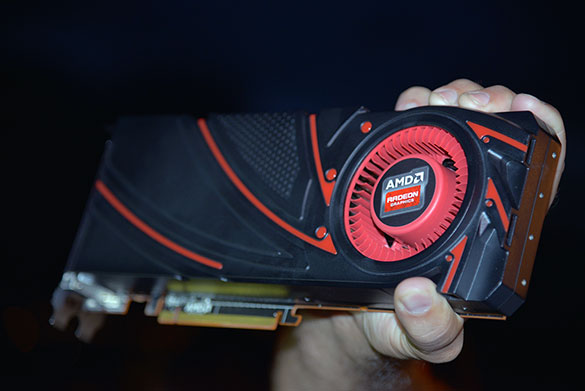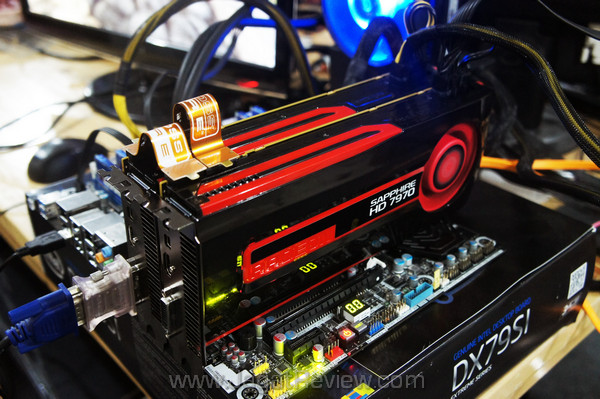heph
New member
So, for the ultimate beginner, before you can get to the Darkcoin Mining Walkthrough, you'll need a rig capable of mining Darkcoin.
This guide is for the beginner looking to mine casually. Somebody looking to mine on a large scale would likely identify hardware differently. This guide aims to offer some basic Hardware choice selections, with reasoning behind them.
Most folks probably already have a CPU put together and are looking to add components in an effort to mine better. For these people your primary concern will be your GPU. Simply add a good one and move on down the road, as swapping out other parts will likely not produce much benefit.
It's all about the GPU
So what are some good mining cards? Well for starters, here are 2 good resources:

Other factors to consider: Multiple graphics cards
What about CPU?
Recommendation: Rosewill Capstone PSUs - They're fairly cheap and tend to run at 90+ Efficiency through most of their power range (30% to 80% power draw). Basically a platinum PSU for the price of a gold (bonus is that they're modular)

Cooling
Case:

Riser Cards
Motherboard:


This guide is for the beginner looking to mine casually. Somebody looking to mine on a large scale would likely identify hardware differently. This guide aims to offer some basic Hardware choice selections, with reasoning behind them.
Most folks probably already have a CPU put together and are looking to add components in an effort to mine better. For these people your primary concern will be your GPU. Simply add a good one and move on down the road, as swapping out other parts will likely not produce much benefit.
It's all about the GPU
One of the great things about Darkcoin is that you can simultaneously mine with a GPU (Graphics Card) and a CPU (Processor). That being said the vast majority of your hash rate (mining speed) will come from your GPU. A great mining GPU will produce a hash rate of about 2.5 Mh/s where as a great mining CPU will produce about .5 Mh/s. It is because of this that most people will recommend (and rightly so) that a person focus on GPU when building a mining rig. Outside of raw speed another factor to consider is power draw. GPU's suck up a lot of power and the fastest of the fast absorb a disproportionately large amount of power. It is because of this that some people will choose a "slower" card over a "faster" card, because it's "more efficient".
So what are some good mining cards? Well for starters, here are 2 good resources:
- Darkcoin Mining Comparison - CPU tab at bottom
- Litecoin Mining Comparison - Even though litecoin uses a different method to mine, the comparisons are still useful, and this list shows efficiency
Fastest:
AMD: 5970, 6990, 7990, R9 280x, R9 290, R9 290x
Faster:
AMD: 5870, 6970, 7870, 7950, 7970, R9 270
Fast: 6870, 6950,7850
Budget Recommendation: Used AMD 5970 off Ebay - $200 - $300
Baller Recommendation: AMD 6990 or 7990 (a true baller would get two), or multiple r9 290x - $400 - $900 per card

But you love Nvidia? Sorry to break it to you, but Nvidia just doesn't offer as much performance as AMD when it comes to mining.AMD: 5970, 6990, 7990, R9 280x, R9 290, R9 290x
Faster:
AMD: 5870, 6970, 7870, 7950, 7970, R9 270
Fast: 6870, 6950,7850
Budget Recommendation: Used AMD 5970 off Ebay - $200 - $300
Baller Recommendation: AMD 6990 or 7990 (a true baller would get two), or multiple r9 290x - $400 - $900 per card
Other factors to consider: Multiple graphics cards
If you buy a motherboard that supports multiple graphics cards you can have more miners running at one time. This will either allow you to mine more with multiple "slower" cards for efficiency, or simply mine the maximum possible from a mh/s standpoint. Your choice.

What about CPU?
To be honest with you CPU mining is more of a bonus. You need a CPU to run a computer anyway, so why not get a little more mining speed out of it? CPU's tend to mine about 0.1 - 0.5 Mh/s. The resources above will show you comparisons of CPU mining capabilities as well as GPU speeds.
The gist however is that I7 processors are the fastest for mining. These may, however, be prohibatively expensive. the cost-performance ratio of CPU mining is not nearly as good as GPU mining. a $300 4770k will mine about 0.5 Mh/s where as a $400 AMD 6990 will get you 3 Mh/s. So the GPU nets (in this example only) about 6x the speed for a 30% increase in price.
Recommendation: a used I5 2500k or used I7 off ebay - $150-$200
Baller Recommendation: an I7 4770k - $300

Power SuppliesThe gist however is that I7 processors are the fastest for mining. These may, however, be prohibatively expensive. the cost-performance ratio of CPU mining is not nearly as good as GPU mining. a $300 4770k will mine about 0.5 Mh/s where as a $400 AMD 6990 will get you 3 Mh/s. So the GPU nets (in this example only) about 6x the speed for a 30% increase in price.
Recommendation: a used I5 2500k or used I7 off ebay - $150-$200
Baller Recommendation: an I7 4770k - $300

PSU's (power supplies) are usually the most overlooked component on a PC, but are absolutely crucial to stability, longevity, and efficiency. Use a PSU Calculator to determine your peak wattage needed. Then buy a PSU with at least that much power. DO NOT cheap out on the PSU. Buy at least a gold standard PSU and if you can swing it go ahead and get a Platinum. Why?
Assume your rig runs at 750w regularly. A PSu that's 70% efficient will pull 1071 watts from the wall. Where as a PSU that's 90% efficient will pull 833 watts from the wall. That's over 200w difference from the same rig, and that kind of difference will add up over time.
Cooling
Mining pumps out a lot of heat since most of your heat producing components are running full-tilt the whole time. Even though Darkcoin mining is less heat intensive than others, you will still want to take heat removal into account.
Case:
Removing heat, in a lot of ways, begins with your case. Whether air cooling or water cooling you will need a case that efficiently moves air through it. It's difficult to recommend specific cases since form factor plays a large role. That said look for a case that pulls air in through the front using 120mm or lager fans (more than one intake is a good thing), and has exhaust fans either on top, out the rear, or both. Your PSU fan will remove some air/heat depending on the way it's positioned, but when air cooling graphics cards you will require more airflow than that. If noise is a concern of yours look for cases that utilize more large fans (120mm minimum, but preferably 140mm and larger). Lastly look at the internal layout and make sure there's no glaring obstructions, so that air will move freely.

Watercooling: In no way is watercooling cost efficient or necessary. That said, it's awesome and fun to build. For more information check out this guide for starters, though it's only the tip of the iceberg
For Parts check out http://www.frozencpu.com

Case Fans:For Parts check out http://www.frozencpu.com

Fans matter for both noise and cooling. For case fans, look for fans that push a lot of air quietly. This usually means larger diameter fans. For watercooling fans look for fans with a high SPI (static pressure) to ensure that they push air through your radiators. Gently Typhoon and Corsair SP fans are typically well recommended and well reviewed.

CPU Fans:It's common to replace the included CPU fan because the stock fans tend to be inefficient and noisy. A replacement fan can cool your system better and possibly allow for mild overclocking. Look for copper fins and copper heat-pipes with as large of a fan as your case will allow.
Riser Cards
Though more of an advanced technique, many miners use "riser" adapters to increase their ability to add GPU's to their system. You can buy them through the typical channels (Amazon, Newegg, etc).
Riser Install Guide
Riser Install Guide
Motherboard:
Just make sure you get one with the same socket type as your CPU. Don't buy too cheap a board and look for ones with increased durability jargon, like solid capacitors and such. If you're going to run multiple GPU's make suire you get a mobo (motherboard) with multiple PCI Express slots (sometimes called PCIx16)
Ram:Make sure it matches your Motherboard's speed ratings. Get at least 4gb, but anything more than that is generally unnecessary. Look for RAM with heat spreaders, especially if you think you may overclock the RAM.
Hard drives:SSD or HDD, doesn't really matter.
Suggestions:
- Build what you want. I always wanted a small form factor gaming rig, so that's what I built and I use it for mining.
- Reuse old parts. If you can reuse ram, hard drives, or CPU's do that. Be careful reusing your old power-supplies since they may not be powerful enough.
- Look to buy used. I got my CPU and GPU off of ebay for way less that retail and they both work great. Ebay is a risk, but it can pay off.
- Price shop. Don't be too committed to one store. Shop around. See the post below for a good example.
- Don't be too cheap. Cut costs where you can but try to get quality hardware. A $30 difference in your PSU can be the difference between your miner running smoothly for the next 10 years and frying your computer and burning out your GPU.
- Read reviews. ALWAYS read reviews. Newegg and Amazon are great places to check out reviews even if you're not buying from there. Also check out in depth reviews from Anandtech, Tomshardware, JohnnyGuru and others.
- Map out your build before you start.
Last edited by a moderator:
